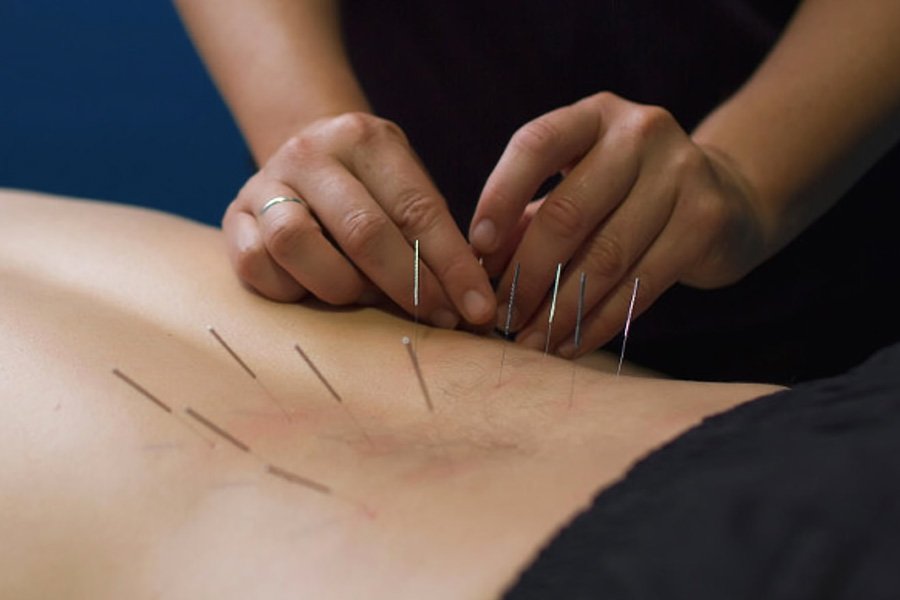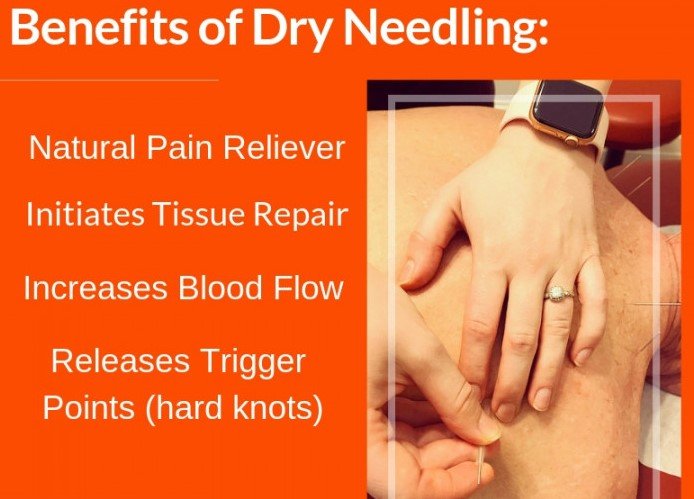
Dry Needling
-
Dry Needling uses a very fine filament needle inserted through the skin into the deeper tissues that are considered trigger points
Dry needling works by causing a micro lesion within pathological tissue thus breaking up shortened tissues, inhibiting a reflex arc from the nervous system to the tissue, normalizing the inflammatory response, and centrally mediating the pain
This mechanical and neuromuscular effect provides an environment that enhances the body’s ability to heal, which ultimately reduces pain and relaxes muscles/soft tissues
-
2 times a week for 3 weeks (or around 6 sessions, & must have at least 3 days off in between treatments)
More severe conditions may need closer to 12 treatment sessions
Many patients experience a significant and immediate reduction in their pain. Some patients will feel results gradually after each treatment
-
Include, But Not Limited To:
Neck Pain
Back Pain
Upper Extremity Pain- Frozen shoulder, Tennis elbow, Carpal tunnel, Golfer’s elbow, etc.
Headaches
TMJ pain
Lower Extremity Pain- Knee pain, Hamstring strains, Calf tightness/spasms, Plantar Fasciitis, etc.
Scar tissue adhesions
Neuropathies- Sciatica, Bell’s Palsy, Postherpetic Neuralgia, etc.
Tendinopathies- Patellar tendonitis, Achilles tendinitis, Rotator cuff tendinitis, DeQuervain's tendinosis, Trigger finger, etc.
-
-
Acupuncture is not the same as Dry Needling
Acupuncture needles are ONLY skin deep and placed in meridian points that correlate to organ systems
Acupuncture points are mapped to 14 main meridian channels. In traditional Chinese medicine, a meridian channel is also known as a Jing Iou through which Qi (vital life energy), Xue (blood), Jinye (body fluids), Jing (essence) and Shen (spirit) flow
One meridian channel relates to each of the 12 inner organs. The two additional channels relate to “extraordinary vessels” – the interior of the spine (governing vessel) and another along the midline of the abdomen (conception vessel)
Each of the 14 meridian channels has a specific number, and acupuncture points meanings. Those include: Lung (1); Large intestine (20); Stomach (45); Spleen (21); Heart (9); Small intestine (19); Bladder (67); Kidney (27); Pericardium (9); Triple energizer, an organ recognized in Chinese medicine, but not Western medicine (23); Gallbladder (44); Liver (14); Governing Vessel (28, also known as the sea of yang); and Conception Vessel (24, also known as the sea of yin)








